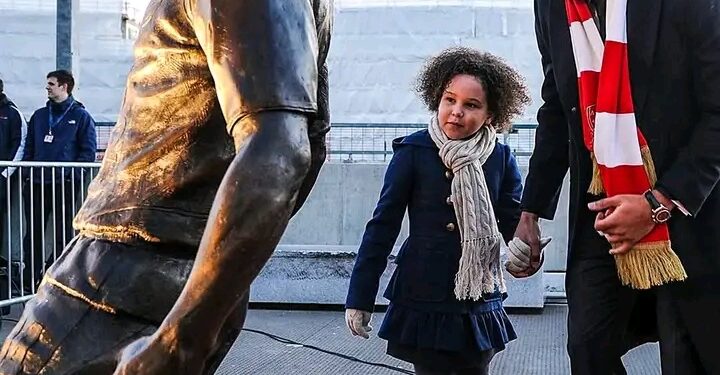The Thierry Henry statue outside the Emirates Stadium is not just a tribute to a legendary footballer—it is a symbol of identity, belonging, and the unbreakable bond between a player and millions of supporters.
Unveiled in 2011 as part of Arsenal’s 125th anniversary celebrations, the statue captures Henry in the most iconic moment of his career: on his knees, fists clenched, roaring toward the North Bank after scoring against Tottenham. It was a goal that didn’t just win a derby—it defined a generation, elevated a club hero into a global icon, and cemented Henry’s place in Arsenal folklore.

The statue tells a deeper story than goals and trophies.
It represents a young Frenchman who arrived in London unsure of himself, doubted by many, and transformed into Arsenal’s greatest-ever goal-scorer. It represents loyalty—because even after leaving, Henry always called Arsenal “home.” And it represents emotion—the emotion he gave the fans and the emotion they gave him back tenfold.
When the statue was unveiled, Henry himself broke down in tears. He said he never scored a goal for personal glory but to make Arsenal fans proud. Seeing himself immortalized in bronze was overwhelming because, to him, it was more than a statue—it was proof that the love between him and the club was mutual, permanent, and real.
Today, fans touch the boots, pose beside the frame, and remember the magic he brought to the pitch. The statue stands not just as a memory of a man, but as a reminder of what football can be: passion, connection, and a legacy that lives far beyond the final whistle.










